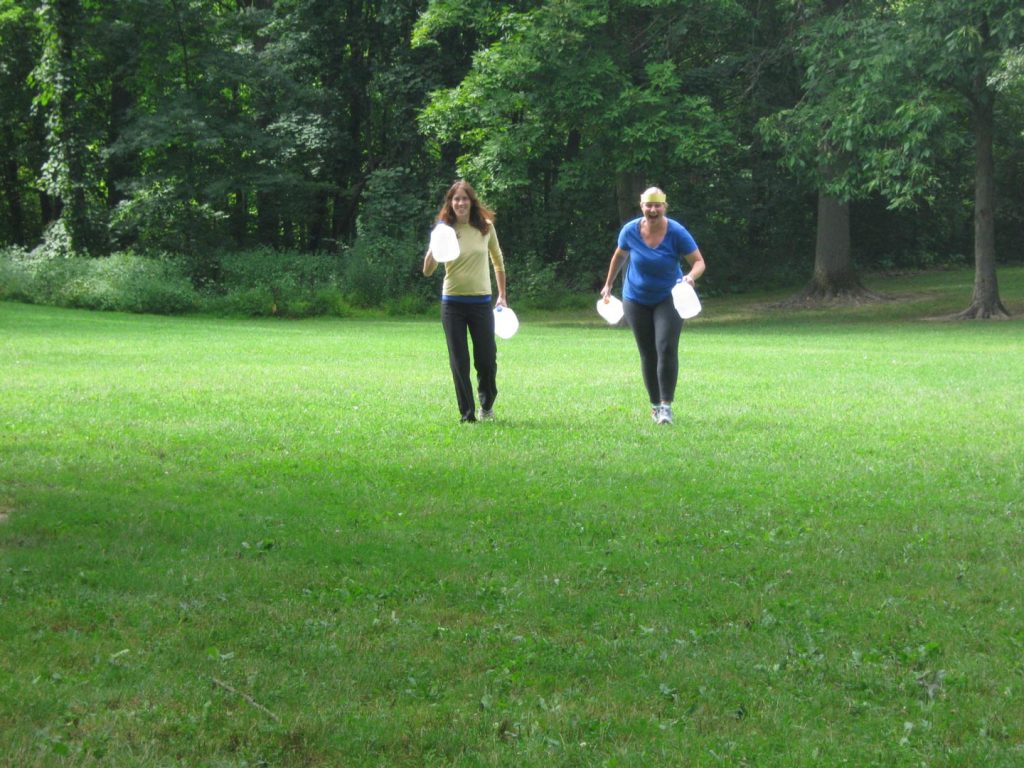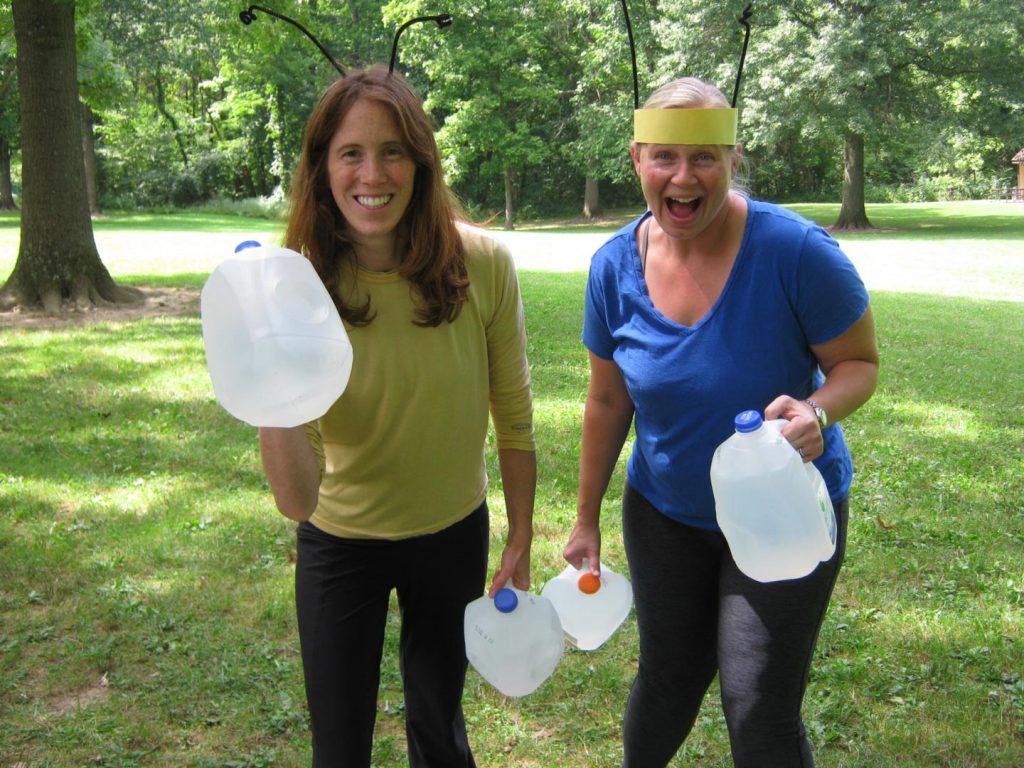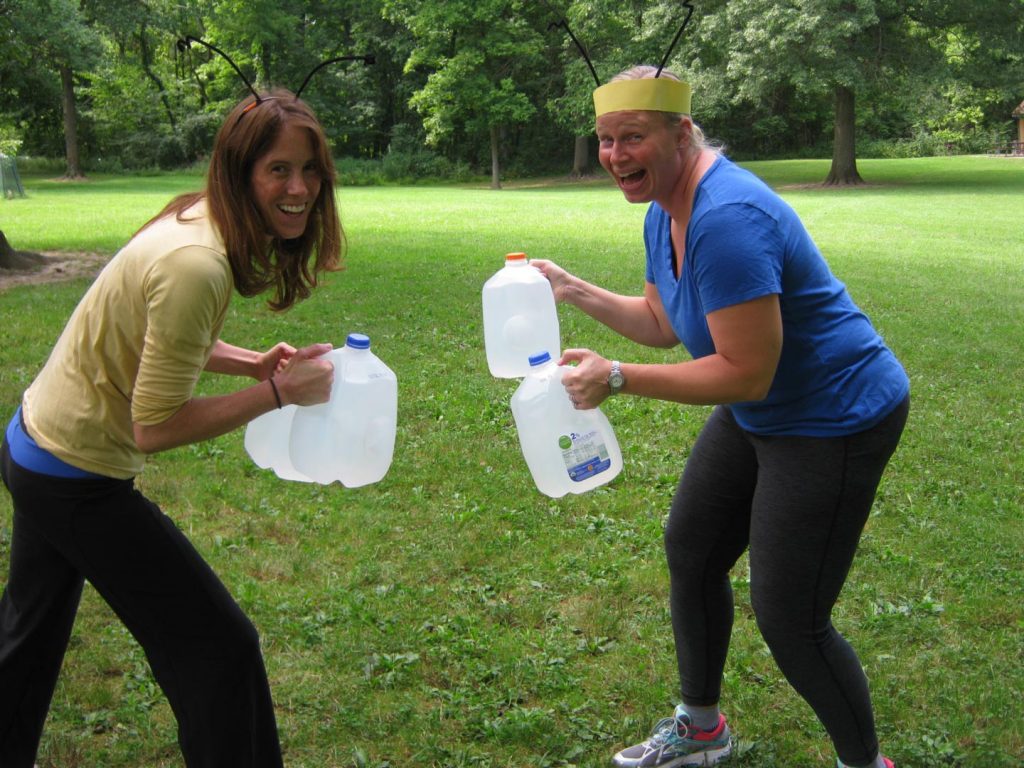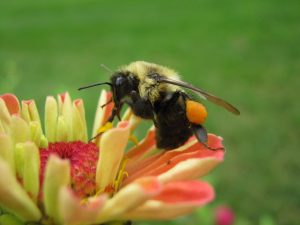
Bees can be a polarizing topic for many. I meet visitors all the time that have an aversion to them. People may have had a traumatic experience with a bee, maybe they aren’t fans of that buzzing noise they make, or maybe they just don’t like bugs. Either way, there is no denying that without our bees there would be fewer beautiful flowers and even less tasty food. Although we must be thankful for all of our bees, not all bees are created equal. Our non-native honey bees get much more publicity for the struggles they endure and the help they provide to agriculture. However, more than 4,000 native bee species live in our gardens throughout North America and contribute to the health and vitality of our plants.
What is a bee?
All bees are members of the superfamily, Apoidea. They have hairy bodies, antennal segments and can be either social or solitary. Social honey bees share the subfamily, Apinae, with our native, social bumble bees, which make nests in the ground, usually occupying old mammal or bird nests. The overwintered, mated female will occupy the nest throughout spring and summer and new drones and potential queens can be produced late in the season.
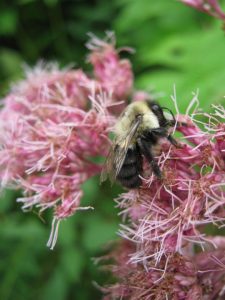
Bumble bees are especially important in the pollination game. They visit flowers in search of food and nesting material, and collect pollen in their pollen sacks. The pollen is moved from flower to flower, and also brought back to the bumble bee nests. They are specifically adapted to pollinate certain plants, because of their strong legs and ability to buzz pollinate, which happens when a bee attaches itself to a flower and vibrates its wings until pollen is loosened.
Blueberries, eggplants and tomatoes need bumble bees for pollination, as does the common milkweed flower. Only the bumble bee has a strong enough leg to tear through a slit in the milkweed flower and pull out the pollinia (mass of pollen grains) inside. Because bumble bees forage in cool and cloudy weather better than many other species, it increases the time they are able to be out pollinating.
Could you do the Bumble Bustle?
Come out to Inniswood Metro Gardens on September 18 from 2-4pm and join us for the our Bumble Bustle Challenge. Families will walk the gardens and work together to make it through challenges that mimic those of a bumble bee. Visitors will crawl, carry heavy weights, and demonstrate leg strength in order to get to the finish line where a pollinator-friendly plant awaits. We hope to see you there.
(By Cindy Maravich, Environmental Educator at Inniswood Metro Gardens)

